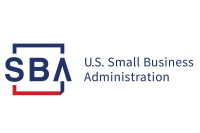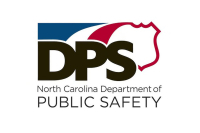Teachers fight to restore public education funds
 Third-grade teacher Carolyn Cope deals with many stresses day in and day out —making sure her students are happy and healthy, teaching them a new curriculum and making sure she’s prepared them well enough to pass their extensive reading tests.
Third-grade teacher Carolyn Cope deals with many stresses day in and day out —making sure her students are happy and healthy, teaching them a new curriculum and making sure she’s prepared them well enough to pass their extensive reading tests.
It’s a job she feels she was called to do and one that she still loves, despite the continued statewide cuts to public education. She said she continues to do her job with fewer resources but doesn’t feel like the state is meeting its constitutional obligation to fund public education.
Cope recalls several years ago when former Macon County Commissioner Jim Davis, now a state senator, voted against funding teachers’ 2 percent supplement because he claimed it was not the county’s responsibility to provide salaries and teacher supplies.
“He said it was the state’s responsibility, and I respected that because he was right,” Cope said. “But what happened? Now we’re in a position where he can make a difference and that hasn’t happened.”
Cope and other educators discussed the local impact of state education reductions last week during an open forum at Macon County Middle School. Local school systems all over the state are dealing with cuts for textbooks, teacher assistants, per pupil funding and driver’s education. They are also dealing with larger classroom sizes, a new curriculum and more standardized testing requirements.
Chris Baldwin, Macon County Schools superintendent, said the school system could be looking at a $600,000 budget shortfall if the North Carolina General Assembly follows through with all its proposed cuts. Because Macon County has been tightening its financial belt since 2007, Baldwin doesn’t know how much more tightening can be done without consequences.
Related Items
“We’ve been talking about these cuts for some time and we’ve been doing more and more with less for the past six to seven years,” he said. “At some point we’ll have to do less with less — it will come to that realization. It would be a tremendous disservice to the students in the classrooms right now compared to those in the past.”
Textbooks
Cope says her number one stress at work is going to the school copier to print materials for her students.
“I have no textbooks,” she said. “I have to have some materials for my students.”
Textbook funding has gone from $68 per student in 2008-09 to about $15 per student in 2014-15 — a 78 percent reduction. At the same time, funds for instructional supplies have been reduced from $59 per student to about $28 per student.
With no funding for new textbooks and a brand new curriculum — the controversial Common Core — teachers are left to develop their own lesson plans and handouts for students.
That’s fine with Cope — she enjoys creating her own lesson plans — but the school system’s tight budget doesn’t allow for endless copies either. Each school is allotted so many copies and teachers make a diligent effort not to exceed that number.
“I have to count every copy I make so that I don’t hurt the school system,” Cope said.
Let’s do the math — all third-grade students are required to read 36 passages a year and take a test on each of them. Each passage is about six pages long and each class has about 20 students. That comes out to about 180 pages per child, which equals 3,600 pages Cope has to copy for reading passages. And that is only for reading.
Baldwin said the school system pays $190,000 a year for its copier contract.
The old textbooks the school system has don’t teach math the same way as the new Common Core Curriculum, which renders them useless. Any homework or lessons have to be sent home as paper copies. Cope said many parents have told her they could help their children with homework more at home if they had a textbook to review. With the legislature threatening to change the curriculum again, it would be a waste of money to purchase any new books that teach Common Core.
“The state’s getting ready to change our curriculum again, so all these lesson plans will have to be redone just as it’s getting smoothed out,” she said.
Driver’s education
John deVille, a social studies teacher at Franklin High School and president of the Macon County chapter of the North Carolina Association of Educators, said the true cost of the driver’s education program is between $300 to $400 per student, but starting July 2015, the state will not be designating any funding for driver’s education programs.
Alton Sutton has taught driver’s education for many years and he said cutting the program could prove detrimental in the future.
“It’s a lifetime thing — you’re going to drive the rest of your life, so you better know how,” he said. “You’ve all been on the road — it gets worse every day.”
Because of its importance, he said Macon County would find a way to fund the program locally to the tune of about $75,000, which will impact other areas of the local budget.
Of course, students aren’t required to take driver’s education, but if they don’t they can’t get their license until they turn 18. If the program doesn’t get funded on the county level, the only other option would be for parents to pay a private company to teach their child how to drive.
“Even when the state was providing funds, it wasn’t enough,” Sutton said. “If not for the county commissioners, we wouldn’t have it.”
DeVille said three studies from the National Institutes of Health have shown that states with graduated licensing programs — like North Carolina — have reduced their rates of teen driver fatal crashes by 8 to 14 percent.
Sutton said the problem was that most of the legislators didn’t have children young enough to understand the stresses of having a teenage driver.
“What we’ll have is a lot of 15- to 17-year-olds out there driving without a license, and that’s scary,” he said.
Right now Macon County Schools has 465 students enrolled in the online program, but Sutton said only about 70 of those would complete the online portion and make it to the driving portion by end of June. While the school charges only $20 now for the program, that amount may increase to $60 if it has to be completely county-funded.
Sutton encouraged everyone to contact their local legislators and let them know how important the program is for student success.
Testing tied to teacher pay
Cope got emotional when she began to talk about all the testing requirements, even for her young students.
Her students must make at least a 73 on all of their 36 reading assessments throughout the year to move on to fourth grade. Students get 10 chances to pass each assessment, which Cope said is very time-consuming and stressful for students. Many of her students have shown tremendous growth throughout the year, but Cope said some still wouldn’t pass the math and reading assessments because of other circumstances beyond her control as a teacher.
“I’m not worried about my pay — it is what it is — but I get resentful when I see my students suffering because of the ridiculous amounts of testing for a 7-year-old child,” she said. “I want to do well for my county and I want to be a good employee. I know how hard I’ve worked and how hard I’ve tried, but there are days I get very stressed to think that part of my pay will be tied to these test scores. So much is out of our control.”
The state gave teachers a raise last year, but Baldwin said the local system had to budget $185,000 to give locally paid teachers the raise and another $288,000 in local funding to make up for the state cut to teacher assistants.
With another raise for teachers anticipated this year, Baldwin said he isn’t sure where else the local budget can be cut. Cuts have already been made to the local budget through attrition. The school system had 712 employees in 2013 compared to 651 this year.
“The only way to account for that is through attrition and the end result is we’re not going to have teacher assistants in second- and third-grade classrooms,” Baldwin said. “I can’t emphasize the importance that has on those classrooms.”
Possible resolutions
After everyone had a chance to speak, deVille offered up several possible scenarios moving forward. He said the first option was for local educators and commissioners to do nothing and continue to see public education decline as more and more money goes to private school vouchers and charter schools. The other options would be to have the local government make up for the state cuts, but deVille said the best solution would be to have the state live up to its responsibility of funding public education.
“Commissioners are between a rock and a hard place,” he said. “They don’t want to see education fail and they don’t want to raise taxes.”
He said he would be asking commissioners in Macon as well as other counties to pass a resolution to send to the General Assembly telling legislators that the state is not living up to its constitutional mandate.
“I think that would be a powerful message,” he said.
On the other hand, deVille said Macon County could levy a 25-cent sales tax. A referendum to approve it could be placed on the ballot as early as this fall and could be specifically earmarked for education.
By the numbers
• $563 million less spent by the state on K-12 in 2014 compared to the 2008, after adjusting for inflation.
• $525 million in revenue lost over the biennium because of the new tax plan.
• $117 million is the amount that the 2014 K-12 budget falls short of maintaining current service levels
North Carolina education changes from 2008-09 to 2014-15:
• 43,000 more students in North Carolina
• 2,471 fewer teachers
• 7,150 fewer teacher assistants
• 22 percent decrease in central office personnel
• 19 percent decrease in assistant principals
SOURCE: www.ncpublicschools.org
Driver’s education cuts
• $238 per ninth-grade student in 2009-10
• $191 per ninth-grade student in 2013-14
• $0 beginning July 2015
Textbook cuts
In 2014-15, textbooks were funded at $24 million, or roughly one-fifth of the 2009-10 budget of $116 million. This is less than $20 per student while a textbook typically costs $35-85.
Classroom supply cuts
Classroom materials and instructional supplies have been cut by about 47 percent since 2009-10, down from $90.7 million when adjusted for inflation to around $50 million for the current school year.









